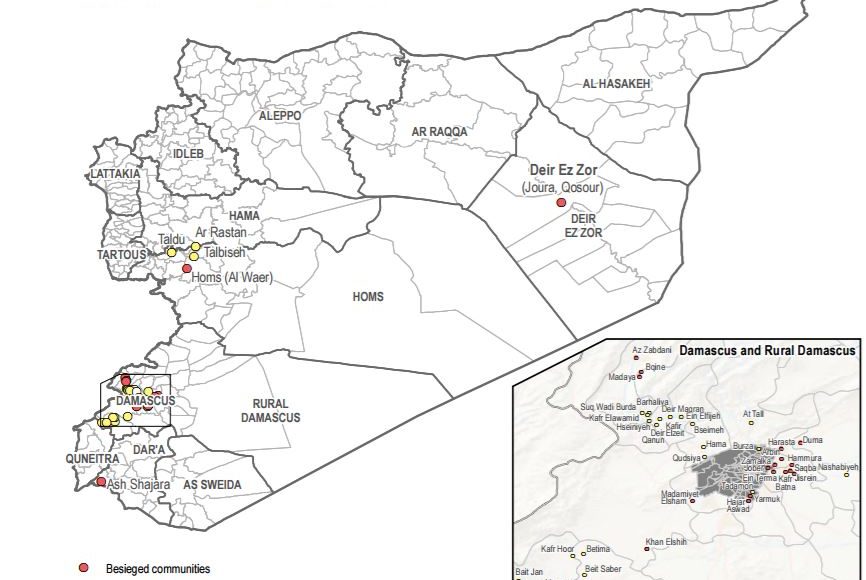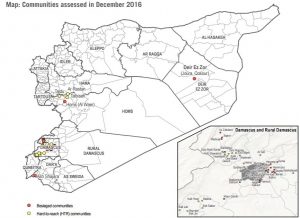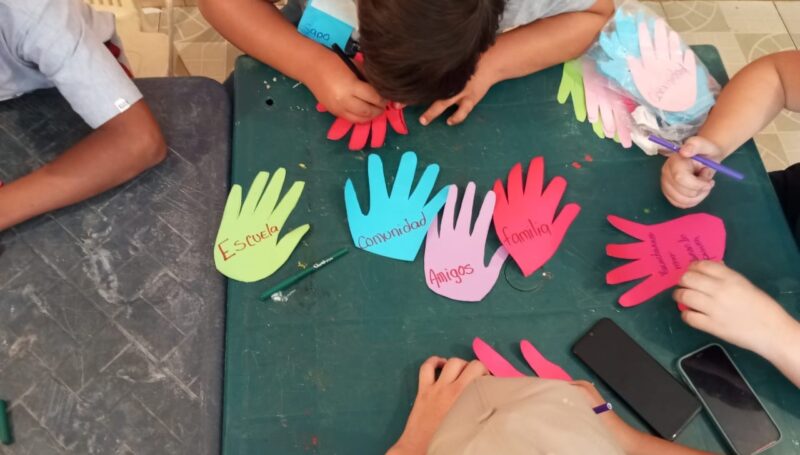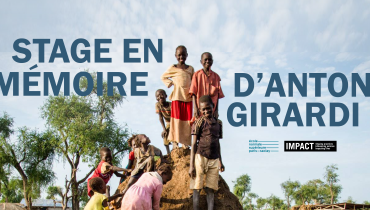As the Syrian conflict enters its sixth year, civilian populations inside Syria face continued violence, food insecurity and limited access to basic services. Restrictions on access and move
ment make besieged and hard to reach communities particularly vulnerable as populations face additional every-day challenges. Understanding the impact
of access restrictions on the humanitarian situation is a critical component of a unified and coordinated response amongst humanitarian actors, aiming to support most vulnerable communities.
REACH has partnered with the Syria INGO Regional Forum (SIRF) since June 2016 to provide monthly community profiles of areas facing limitations on civilian movement and humanitarian access. By providing such timely updates on individual communities, REACH is informing more effective and evidence based operational and strategic response in besieged and hard to reach communities.
In December 2016 and early January 2017, REACH assessed 43 communities in Syria currently facing restrictions, 20 of which are classified by the UN as besieged and 23 as hard to reach. The sixth round of Compiled Community Profiles is now available, alongside a Community Profiles Situation Overview.
Except for Khan Elshih, none of the assessed communities in besieged and hard to reach areas reported receiving aid during the month of December, with widespread shortages of food, water, electricity, education and health care linked to access restrictions. In Az Zabdani, Madaya and Deir ez Zor, food insecurity reached critical levels with populations resorting to extreme coping strategies, such as skipping meals and not eating for several days. Access to fuel also remains limited or decreased across assessed communities, affecting access to electricity, the functioning of water pumps, hospitals and bakeries, and further exacerbating hardships in these cold winter months.
Increase in hostilities was reported in December in the communities of Az Zabdani, Madaya, Homs Al Waer and Ash Shajara, leading in the case of Madaya to the closure of markets and schools due to conflict-related security concerns.
Conflict also intensified in Wadi Burda for control of Ein Elfijeh water plant, the main source of water for Damascus City. This has led to a rapidly deterioration in the humanitarian situation in December, with extremely tight access restrictions making it nearly impossible for civilians, commercial goods, and humanitarian assistance to enter or leave the Wadi Burda region, resulting in the collapse of water and electricity networks, the closure of most health facilities and schools, widespread commodity shortages and price increases.
In some other locations improvements have been recorded following truce agreements. Hostilities in At Tall culminated in a truce agreement reached in early December, and the gradual lessening of access restrictions. Hama and Qudsiya, Madamiyet Elsham and Khan Elshih, Rural Damascus communities, which all implemented truce agreements in recent months, continued to report improvements in the humanitarian situation, with more humanitarian actors allowed to operate in the communities. New risks including detention and conscription were however reported.
Access restrictions and the dynamic nature of conditions in besieged and hard to reach communities present particular challenges for humanitarian actors in identifying the needs and vulnerabilities specific to such areas. REACH will thereby continue to provide monthly updates, providing an evidence-base for strategic decision making and humanitarian programming in support of most vulnerable populations within Syria.









